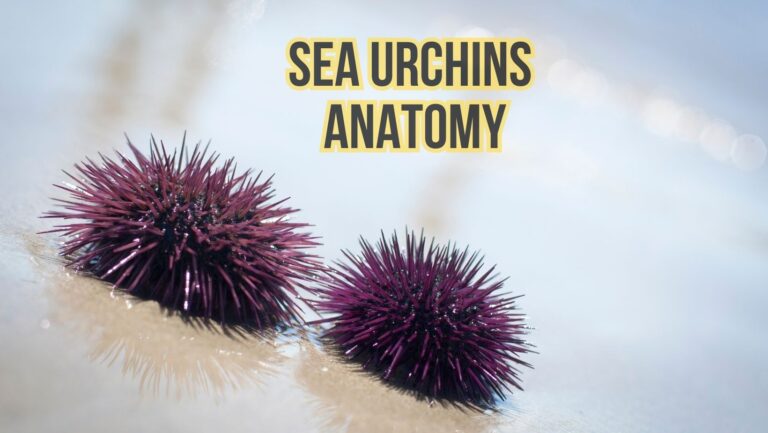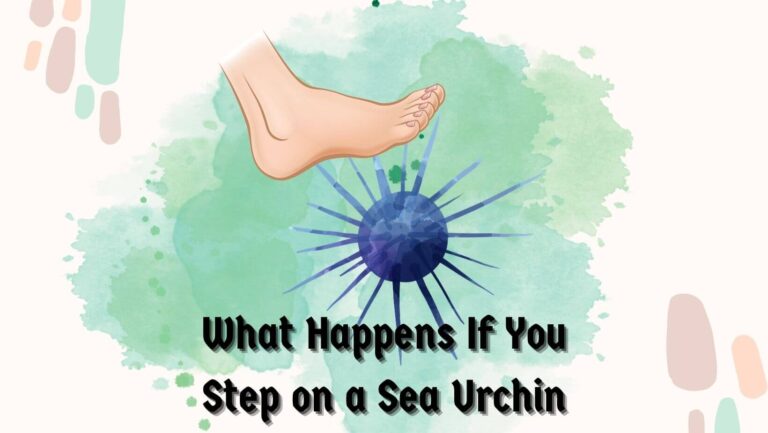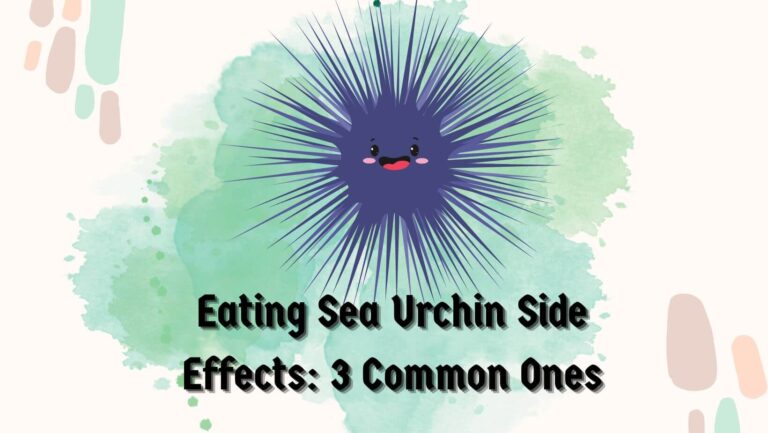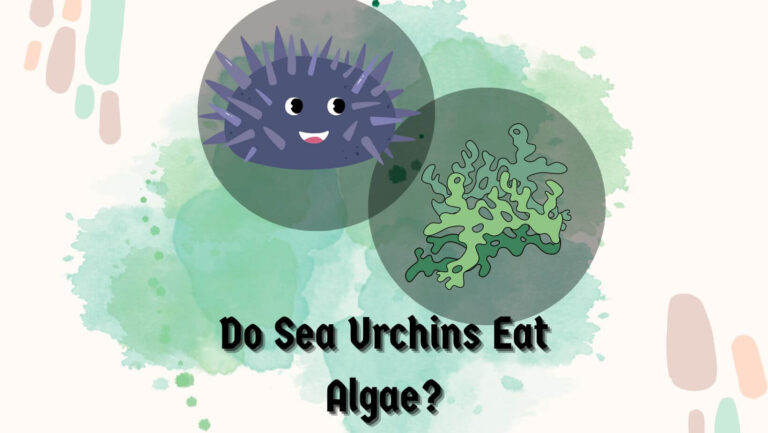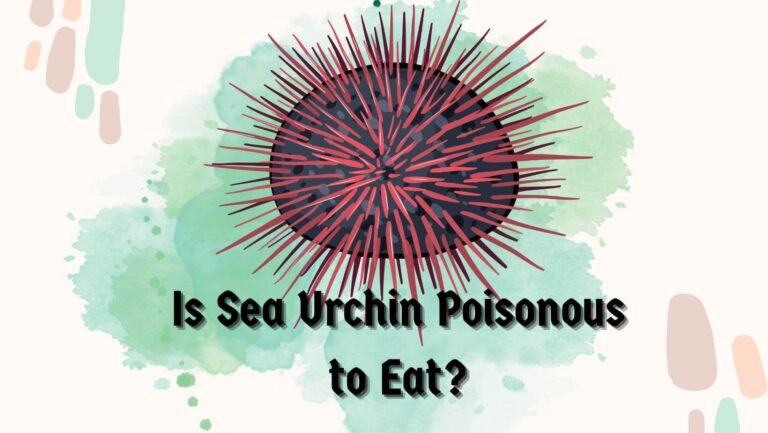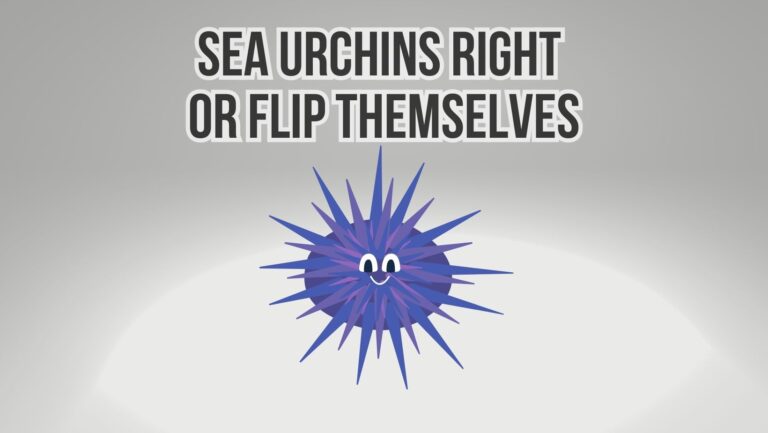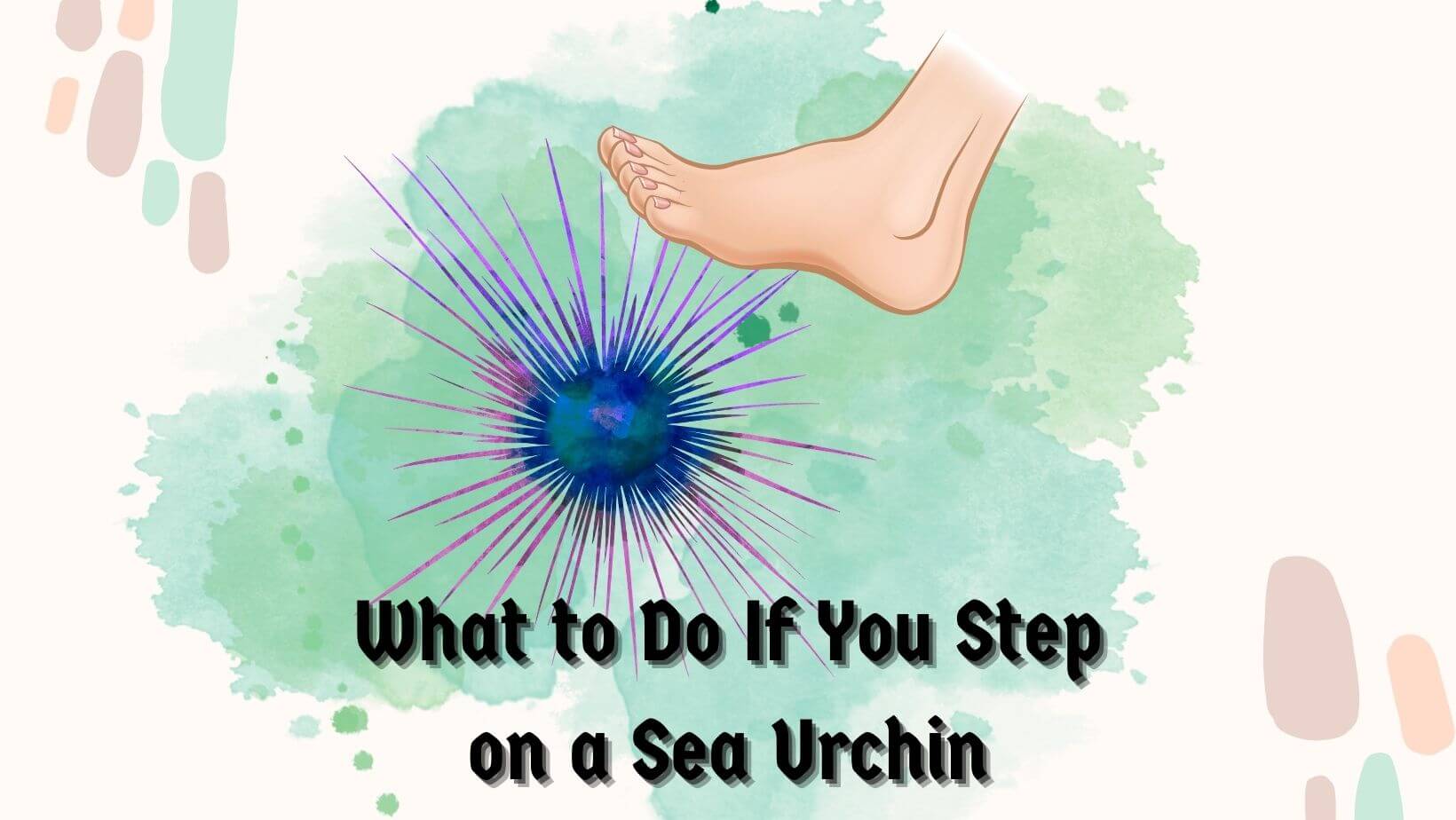
When exploring the ocean wonders, encountering sea creatures is a part of the adventure. However, accidents can happen. If you encounter sea urchins, Sting, you might feel worried & experience some immediate symptoms.
I have already discussed what happens if you step on a sea urchin. Therefore, today, we will be delving into what to do if you step on a sea urchin. We will further discuss the potential risk and injuries associated with stepping on them, along with the road map of immediate actions.
It is important to employ proper pain management techniques & preventive measures. Before I tell you what to do if you step on a sea urchin, let’s take a quick look at the symptoms you are likely to experience after stepping on a sea urchin or getting a sting from them.
Table of Contents
Sea Urchins Sting Symptoms

Stepping only sea urchins can be an expected but excruciating experience. You should know that these spiky Marine creatures are equipped with sharp spines that can also be venomous.
These sharp spines can easily penetrate our skin, causing intense pain & discomfort. Therefore, you must recognize the immediate symptoms and long-term complications to take immediate action with proper planning.
The most common immediate symptoms you will likely experience include severe pain, swelling, redness, and possible puncture wounds on the affected area. Also, know that these kinds of symptoms may vary depending on the species of sea urchins you stepped on as well as the location of the injury.
Suppose the sea urchins you stepped on are known to be venomous. In that case, the symptoms you will experience can be very severe and may require immediate medical intervention to prevent further complications.
For example, flower urchins, typically found in tropical water, usually have venomous spines that may cause intense pain & allergic reaction in some individuals, especially those with compromised immune systems.
On the other hand, sea urchins often encountered in rocky coastal areas can also cause similar symptoms without toxic effects. Therefore, it is important to determine the species of sea urchins you stepped on to help gauge the severity of the situation and make an informed decision. Let’s look at the immediate action or what to do if you step on a sea urchin.
5 Sea Urchin First Aid Kit Essentials
Trust me; you should have a well-equipped first aid kit specially tailored for sea urchins’ injuries, as it can make a significant difference in your response & recovery. Below I’m mentioning a few essential items to include in your sea urchin’s first aid kit.
- Tweezers or sterilized needles for spine removal
- Sterile saline solution or seawater for rinsing
- Antibacterial ointment or cream to prevent infection.
- Pain relievers & antiinflammatory medications like NSAIDs for relief from pain and inflammation.
- Adhesive bandages or gauze for wound dressing & promote healing.
What To Do If You Step On A Sea Urchins?

The first thing you need to do after stepping on sea urchins is take prompt measures. If you don’t take the right measures to minimize the risk of complications, the healing will also be affected severely. Therefore, below, I am giving you some immediate actions that you must stay after stepping on a sea urchin or getting a sting from them.
Rinse The Affected Area With Seawater
You must rinse the affected area with any water. Since you are already on the beach, consider using seawater to rinse the wound and remove any remaining spines or fragments from the injured side to reduce the risk of infection.
Also, seawater will help you clean wounds without introducing foreign substances that may worsen the injury. You should never use fresh water or urine, especially for rinsing. People often think that peeing on a sea urchin’s Sting is helpful. I have shared a recent article: do you pee on a sea urchin sting?
Remove Any Visible Spines Or Fragments
When rinsing the affected area properly, carefully inspect it for any visible spines or fragments embedded into your skin. If you find any, you need to use tweezers or sterilized needles to remove them gently.
And make sure not to push them any deeper into the skin. If you are not using the proper technique to remove the spines, it may cause further injury. It would help if you considered grasping the spines as close to the skin as possible and pulling it out in the same direction it entered. Ensure you are not twisting or applying excessive force as this may break the spine & leaf fragment behind, leading to infection.
Soak The Affected Area In Hot Water
Consider immersing the affected area in hot water to relieve the pain. Yes, hot water can help you find some relief from the pain associated with a sea urchin’s injury. Hot water is known to relax the muscles, neutralizing venom and promoting blood circulation, which further aids in the body’s natural healing process.
However, make sure you use water that is comfortably warm, not scalding hot, to prevent burn or further damage to the skin. It is best to use water temperature between 45 to 50 degree Celsius and soak the affected area for approximately 30 to 90 minutes, depending on the severity of the pain & specific circumstances.
Seek Medical Assistance If Necessary
If you feel severe pain, swelling, or difficulty in breathing, it is important to contact Health Care professionals. Even though immediate actions can help you alleviate pain, many sea urchin-related injuries may require professional medical attention.
Therefore, if your symptoms persist or worsen, or you’re unsure about the severity of the injury, you should consider seeking medical assistance promptly. Also, a Health Care professional will best assess your condition, provide appropriate treatment, and administer tetanus shots if required. In addition, healthcare professionals are the best ones to identify any potential complication or infection from the sea urchin encounter.
Monitoring The Wound After Initial Treatment
After getting the initial treatment, you must regularly pay attention to the wound. It would help if you watched out for the wound for signs of infection, increasing pain, persisting swelling, or pus.
If you notice any of this, you must immediately contact the health care professional and get medical intervention. However, if the symptoms or the wound are not severe, you can consider some pain management and medications.
Pain Management & Medication
If you want a speedy recovery and overall comfort, you can manage the pain using some pain management techniques and medications. Below, I mention some but consult with a Health Care professional before employing any of the following.
Over-the-counter Pain Reliever
It would help if you considered using nonsteroidal antiinflammatory drugs, commonly used in the over-the-counter pain reliever, to help reduce pain & inflammation associated with a sea urchin injury.
Yes, many medications, like ibuprofen or naproxen sodium, are effective in providing relief in Delhi. Also, follow the recommended dose and precautions on the packaging or consult a Health Care Professional for appropriate guidance.
Topical Treatments For Pain Relief
You can also consider topical treatment that provides localized relief from pain & discomfort. There are many over-the-counter Lidocaine creams or gels that can numb the affected area and provide you temporary relief from pain.
There are also a few natural remedies, like aloe vera or vinegar, which you can apply topically to soothe your skin and alleviate discomfort. These substances have cooling and anti-inflammatory properties that can provide a soothing effect.
Prescription Pain Medication
You should consider a medication prescription if the case is severe or the pain persists. Suppose over-the-counter options are not providing you adequate relief. In that case, you should consult a Health Care professional who will assess your pain level, medical history, and overall condition to determine the need for prescription medication.
Trust me; they can prescribe appropriate anal analgesics or stronger pain relievers to help you manage your symptoms effectively. Also, you should note that pain management techniques & medications do provide relief, but they shouldn’t be a substitute for medical advice.
3 Preventive Measures
Preventing sea urchins from encountering them is the best way to avoid any pain or inconvenience associated with stepping on them. Below, I mention five preventive measures to reduce the risk of injuries and ensure a safer ocean experience for you, your friends & family.
Wearing Protective Footwear In Sea Urchin Habitats
You must wear protective footwear, especially when exploring areas where sea urchins are commonly found. You must wear water shoes to protect from sea urchins or sandals with sturdy soles, acting as a barrier between your feet & sea urchin spines, to reduce the risk of injury.
Ensure you use appropriate footwear that covers your feet and offers adequate transactions. It is best to choose shoes specially designed for water activities and provide a barrier between your feet & potential hazards like sharp rocks & spines of sea urchins.
Familiarizing Yourself With Sea Urchin Habitats & Behaviors
Another effective preventive measure is to understand the location & conditions where sea urchins thrive on deciding where to swim or explore. Before venturing into the water, you must properly research and familiarise yourself with the local marine life, including sea urchin habitat.
You should know that sea urchins are not known to be abundantly found in rocky areas, coral reefs as well as grass beds. Therefore, be sure to avoid these kinds of areas where encounters are more likely to occur.
Avoiding Contact With Sea Urchins
Even though prevention is key, accidents may still happen. Therefore, you should minimize the risk of encountering sea urchins in the first place by being observant & adopting strategies to avoid contact.
It would help if you kept an eye out for signs of sea urchins in the water, like their spiky appearance and the presence of nearby coral reefs or rocks.
It would help if you also considered strategies to minimize the risk of encounters, like maintaining a safe distance from the sea urchins, avoiding touching their unfamiliar objects underwater and respecting marine biodiversity.
Also, be mindful and take precautions whenever necessary to reduce the likelihood of stepping on sea urchins in the first place.
Also Read & Learn Valuable Insights
When to Seek Professional Medical Attention
- You must seek professional medical attention if you experience severe pain that persists or worsens, redness that spreads beyond the immediate area, or swelling that increases.
- If you find the presence of pus or discharge from the wound that may indicate a severe reaction or infection, it’s important to seek medical assistance promptly.
- If you notice delayed symptoms like increasing pain and swelling hours or even days after the incident.
- If you experience symptoms like difficulty breathing, hives, or other signs of an allergic reaction, seeking immediate medical attention is crucial.
- Suppose you experience systemic effects like weakness, dizziness, nausea, or fever after stepping on a sea urchin. In that case, it’s important to consult a medical professional, as these may be signs of a more serious condition.
- If you have stepped on a sea urchin known as evil or dangerous, it is advisable to seek medical attention (even if your symptoms appear mild).
Conclusion
Indeed, stepping on sea urchins while enjoying the ocean can be a painful & inconvenient experience. However, if you have the proper knowledge and follow all the guidelines in this comprehensive guide, you can be better prepared to handle this situation. If you want a safe & enjoyable Ocean experience:
- Consider immediate action, proper pain management preventive measures, and well-equipped sea urchins first aid ready.
- Do research and familiarise yourself with sea urchin habitats.
- Wear protective gear like footwear while exercising caution.
All these can significantly reduce the risk of stepping on sea urchins. Always remember that prevention is key, but accidents still happen, so be ready with the first aid kit. If you encounter sea urchins and follow the steps, you must follow all the steps outlined in this guide.
I will give you all the information you need to know what to do if you step on sea urchins, so you will be better equipped to handle this situation. If you follow all the guidelines in the article, you can enjoy the wonder of the ocean and act responsively to avoid painful encounters with our spiky friends, the sea urchins.
If you find this article helpful, then consider sharing it. Your share will help people learn about these spiky creatures and what they can do. They will also get to know what to do if you step on a sea urchin. Do check my other helpful guides on sea urchins facts. See you in the next post, till then, take care & goodbye.

